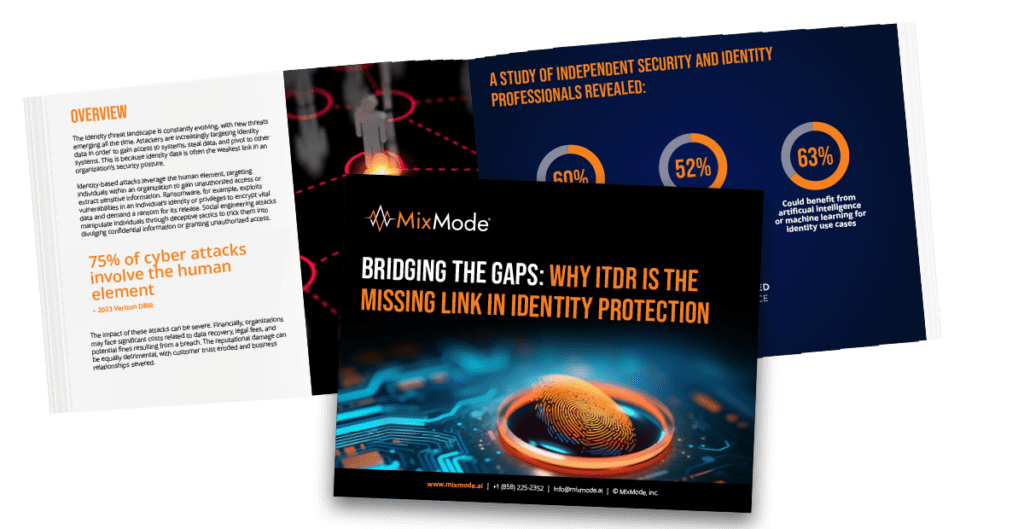 Joe Ariganello VP of Product Marketing
Joe Ariganello VP of Product Marketing
Joe is the VP of Product Marketing at MixMode. He has led product marketing for multiple cybersecurity companies, with stops at Anomali, FireEye, Neustar and Nextel, as well as various start-ups. Originally from NY, Joe resides outside Washington DC and has a BA from Iona University.
The identity threat landscape is constantly evolving, with new threats emerging all the time. Attackers are increasingly targeting identity data in order to gain access to systems, steal data, and pivot to other systems. This is because identity data is often the weakest link in an organization’s security posture.
Identity-based attacks leverage the human element, targeting individuals within an organization to gain unauthorized access or extract sensitive information. Ransomware, for example, exploits vulnerabilities in an individual’s identity or privileges to encrypt vital data and demand a ransom for its release. Social engineering attacks manipulate individuals through deceptive tactics to trick them into divulging confidential information or granting unauthorized access.

The impact of these attacks can be severe. Financially, organizations may face significant costs related to data recovery, legal fees, and potential fines resulting from a breach. The reputational damage can be equally detrimental, with customer trust eroded and business relationships severed.
Current State of Identity Threat Detection
Organizations have traditionally relied on a combination of traditional tools and endpoint defenses to defend against identity-based threats. These tools include:
- Password managers: Password managers help users to create and store strong, unique passwords for all of their online accounts. This makes it more difficult for attackers to gain access to accounts by guessing or cracking passwords.
- Multi-factor authentication (MFA): MFA adds an additional layer of security to logins by requiring users to provide something they know (e.g., a password) and something they have (e.g., a security token or code from their phone). This makes it much more difficult for attackers to gain access to accounts, even if they have stolen passwords.
- Endpoint security: Endpoint security solutions help protect devices from malware and other threats, scanning devices for malicious files, block unauthorized access, and quarantine infected devices.

While these solutions can be effective in protecting against identity-based threats, they are not always enough. Attackers are constantly evolving their techniques, and new, sophisticated attacks emerge all the time.
In our newest eBook, we discuss the limitations of relying on endpoint alone for identifying and addressing identity-based threats and explore the importance of adopting a multi-layered approach and the right ITDR solution.
Other MixMode Articles You Might Like
Visibility is Not Enough to Protect Organizations from Identity Threats
Making the Most of the MITRE ATT&CK Framework: Best Practices for Security Teams
MixMode Brings Cloud-native Real-time Threat Detection and Response to the AWS Marketplace
MixMode Releases State of Cloud Security 2023 Survey and Cloud Detection and Response for AWS
CISOs: Are You Applying NIST / CISA Standards to ALL Data Including the Cloud?
*** This is a Security Bloggers Network syndicated blog from MixMode authored by Joe Ariganello. Read the original post at: https://mixmode.ai/blog/bridging-the-gaps-why-itdr-is-the-missing-link-in-identity-protection/

